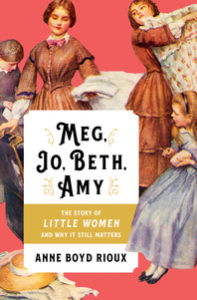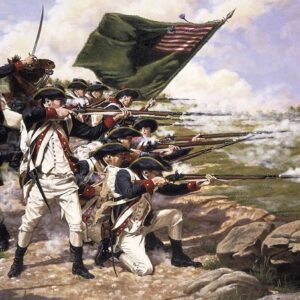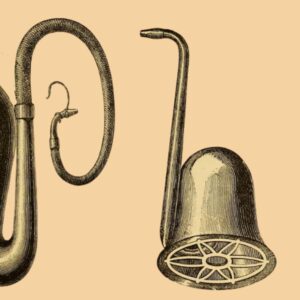
Why Don't More Boys Read Little Women?
"Little Women is presumed to be hardly worthy of rescue from
the educational oblivion into which it has fallen."
There is some evidence that boys can respond positively when encouraged to read Little Women. One school librarian likes to tell the anecdote (presumably because it is an aberration) of a “typically masculine” boy who one day settled down to read Little Women, “inarguably the most femininely titled book in literary history,” and brushed off the teasing of his classmates. “You’re missing a great book,” he told them, and he continued reading. My own experiences with attempting to interest boys and men in Little Women have been largely positive. In my American literature survey courses, I regularly teach Alcott’s novel to a diverse group of traditional and so-called nontraditional (i.e., older) students. I will never forget the response of one online student who saw in the March sisters’ struggles his own difficult journey toward adulthood. “Despite being a 30 year old man,” he wrote, “I’m very sad to be done with this novel, and very happy to have read it.” Nor will I forget the day an African American male student, who listened to the novel at nights while he worked as a security guard, came to class quite upset because Jo had turned down Laurie’s marriage proposal. For these and many other (although not all) of my male students, Little Women was a revelation. They didn’t expect to become so absorbed by it, but they were.
I have also found that young boys can be enticed to read Little Women as well. When invited to speak to my daughter’s sixth-grade English class, I took the opportunity to encourage the students to choose Little Women for their book clubs. I told them about the novel’s popularity and influence, the March sisters and who they were based on, and the career of the woman who wrote it. Before leaving, I asked them if Little Women was a book only for girls, and the students were very vocal in their answer. “Noooo,” they chorused. We talked about how they had just read a book about a boy, Tom Sawyer, and how Little Women was from more or the less the same time period and showed not only what it was like to grow up as a girl but also what it was like for their friend, Laurie (a boy, despite his name), to grow up as a boy. They seemed to agree that it was useful for girls to read about boys and for boys to read about girls. During our discussion, the boys in the class asked as many questions as the girls; I didn’t notice them tuning out or acting as if this discussion was not for them.
Later that week, the teacher told me that three groups had chosen to read Little Women for their book clubs—two groups of girls and one group of boys. When I went back to talk to the three groups, they unfortunately hadn’t read much of the novel yet, but we did discuss which of the sisters they liked best so far and how they were handling some of the slang and archaic language (in some cases, not well). The three boys who had chosen the book seemed to be as interested as the girls were. One in particular impressed me. He liked Jo and was curious to know more about Laurie, who had just been introduced. When he came to write his book review, he was quite persuasive in his recommendation of Little Women, arguing that it gave the reader a better understanding of life in the 1860s, when young men had to go to war and young women had to follow rules about how to dress and how to behave.
This experience convinced me that there was much to be gained by asking or encouraging boys to read Little Women and not much to be lost. None of the three boys exhibited any discomfort about reading the book, nor did any of their classmates make comments about their choice, their teacher later told me. Even though the other boys in the class didn’t read it, they were at least exposed to the idea that boys can read books that are supposedly for girls, and the sky wouldn’t fall. I came away thinking that it can be done, no matter what teachers and parents say. (The biggest hurdle, frankly, was not the book’s title or the gender of the protagonists, but the length of the novel. I encouraged them to treat it as two books in one, thus giving them permission to read only the first part, which does stand alone as a book in its own right. This is something teachers could easily do if they are concerned about how long the book is.)
One reason that so many male readers have been uncomfortable with Little Women—and perhaps the most important reason they should read it—is that it flips the perspective between boys and girls in a way few other literary texts have done. In the words of Carolyn Heilbrun, it is “perhaps the one fictional world where young women, complete unto themselves, are watched with envy by a lonely boy.” Girls are for once at the center, and boys and men are on the margins. The March sisters have lots of conversations that have nothing to do with boys, so Little Women passes the Bechdel test with flying colors. One man said that he read Little Women when he was young precisely to get an inside view of how the opposite sex thought and acted, and he strongly believed that all boys should do the same.
When Laurie tells Jo that he is essentially a voyeur, peeping into the Marches’ windows—“it’s like looking at a picture to see the fire, and you all round the table with your mother”—we are supposed to feel sorry for him. “I haven’t got any mother, you know,” he says quite pathetically, and Jo instantly resolves to make him an honorary member of the family. For male readers, though, Laurie’s position vis-à-vis his female neighbors can be unsettling. The scholar Jan Susina believes that boys feel left out of the text, as he did, because the male characters (including Laurie, John Brooke, Mr. March, and Mr. Laurence) inhabit the place that female characters have always occupied in men’s literature: on the margins, looking in. “Alcott situates the male reader,” he argues, “in the role of Laurie, the fortunate outsider, who is simply allowed to observe the actions of women without speaking.” Ultimately, Susina believes that “Alcott infantilizes her male characters.”
I think what he really means is that she emasculates them, at least according to conventional notions of masculinity. He appears to have felt the same way himself in his graduate course on children’s literature when Little Women was introduced and “the balance of power shifted” because all of the female students knew the book but none of the men did. “The women in the class became the voices of authority,” he says. “The male students were effectively silenced.” Susina realizes that the experience was a valuable one to him, as someone who would become a professor of children’s literature and have primarily female students in his classes. Yet I can’t help thinking that it was also a useful lesson for all of the male students in the class to feel for once as if they were the outsiders. Most female students have felt this way in their literature classes, reading primarily books about men and rarely having the “authority” to speak about what makes the male protagonists tick.
Not all male readers feel excluded by Little Women as Susina assumes they do, however. For library director Philip Charles Crawford, Little Women was fundamental to his childhood; it was the first book in which he saw himself reflected. Unlike Susina, Crawford did identify with Laurie because he also didn’t enjoy sports and preferred playing with girls. Jo and Laurie were “a revelation” to him. “They were everything society told me I shouldn’t be. They were gender nonconformists, a tomboy and a sissy who were able to express their gender identities nontraditionally and get away with it.” In the characters of Jo and Laurie, Alcott portrays gender as fluid, something that must be learned but that can also be modified and even rejected to some extent. Jo is adamant about her desire to be a boy, while Laurie has been teased at school (the boys called him Dora) and is now affectionately called Laurie and Teddy by Jo, who seems determined to make him one of the sisters. Throughout, we see Laurie struggling to conform to conventional expectations for young men because he yearns to be a musician while his grandfather wants him to take over the family business. Little Women is the perfect text for examining with students how gender is constructed and how it is often imposed from without, not from within (something they already know innately but are quickly being taught to ignore). Crawford also sees similar acceptance of alternative femininities and masculinities in books such as The Secret Garden and The Penderwicks, yet he regrets that none of them helps children learn to deal with the bullying that inevitably results from gender nonconformity.
Sadly, such bullying can also result when boys read Little Women, and not only from their peers. The writer Luis Negrón has recounted his painful experience of having been discovered reading it when he was a boy. It was the first book he checked out from the library, and like so many readers before him, he spent hours completely absorbed in the story. When his father made an unexpected return home, he proudly showed him the book, but his father became enraged. “You raising a fag?” he shouted at Luis’s mother. After a stormy argument, his father drove off again, leaving his mother to turn her anger on her son. She screamed at him, “Queer! Little woman!” snatched the book from him, and tore it up. Another gay man who openly declared his love for Little Women, thankfully without retribution, was Leo Lerman, a son of Jewish immigrants and an editor for Condé Nast. He wrote of his deep affection for the book in 1973 for Mademoiselle magazine, under the title “Little Women: Who’s in Love with Louisa May Alcott? I Am.” According to one film critic, Little Women has been “universally popular” with gay boys and men, particularly since Katharine Hepburn’s portrayal of Jo in the 1933 film.
Perhaps this is why other men who admit to having read Little Women thought of it as so taboo that they could liken it only to sneaking illicit sexual material. Author Tracy Kidder was 14 when he fell in love with Little Women and found it “absolutely captivating,” but he was afraid of anyone knowing, so he “kept it secret like a piece of pornography.” Editor and critic Charles McGrath also tried to hide the book when he read it in fourth grade. He had been “enthralled” by Little Men so went back to Little Women, but “because the title made it sound like a girls’ book, I covered my copy with a brown wrapper, not realizing that this probably made ‘Little Women’ seem even more embarrassing. I could have been carrying around ‘Lashed by Lust’ or ‘Bondage Boarding School.’ ” As adults, at least, men can perhaps give themselves more latitude. The Irish writer Sean O’Faolain thought that if he were caught in his study reading Little Women, “I could hold it up with, at most, a self-deprecatory smile or an At-My-Age shrug and go on escaping, unabashed.”
“I can’t help thinking that it was also a useful lesson for all of the male students in the class to feel for once as if they were the outsiders.”
There are also plenty of boys and men who have felt much less conflicted about their interest in Little Women. Two annotated editions of Little Women currently available, for instance, were edited by men, John Matteson and Daniel Shealy, two of the most prominent Alcott scholars. Both men first read the book, as Susina did, when they were adults; but some men report having read it as children, including film critic Roger Ebert, actor Gabriel Byrne (whose mother read it to him), and former Supreme Court Justice John Paul Stevens. George Orwell recalled how much of his early perceptions of America were colored by his childhood reading, which included Little Women and Good Wives, both of which he loved. The Australian critic Peter Craven vividly remembers how, at age eight or nine, “my best friend came up to me at primary school and told me he had read a really great book,” Little Men, to which Craven “crushingly” replied, “That’s a girls’ book.” His friend disagreed, and although he was still dubious, they read it “with great exhilaration” and then proceeded “at great speed, through the whole Louisa May Alcott corpus of classics,” including Little Women. He still believes, “If ever in the history of the world there was a girls’ book, it’s Little Women and its sisters,” but he isn’t afraid to admit having enjoyed them. BBC broadcaster Melvyn Bragg similarly picked up Jo’s Boys first and then got the courage to read Little Women. Later he found that many men admitted to having read it, “although most of them would qualify the admission by muttering on about sisters or cousins leaving it lying around . . . or the teacher ‘forcing’ them to read it at school.” The political operative James Carville, also known as the Ragin’ Cajun, read Little Women at school but doesn’t qualify his experience at all. He calls the book one of his childhood favorites. When his fourth grade class read it aloud, it made him cry.
Other men who have read Little Women at some point in their lives include the novelist Michael Dorris, who cited Professor Bhaer’s advice to Jo to “write what you know” when describing his own literary practice; Stephen King, who referred to it throughout his New York Times review of A Long Fatal Love Chase, including quotations and describing scenes; and Julian Fellowes, who, when accused of borrowing a scene from it for Downton Abbey, admitted to having read it years earlier. Best-selling author John Green goes farther than most, counting Little Women as one of his literary influences and saying he “didn’t understand why boys weren’t supposed to read [it].”
In the popular imagination, the idea of a boy or man reading Little Women is laughable, as demonstrated by comic references to the novel on television. In the popular 1970s BBC sitcom Porridge, set in a prison, Fletcher sells another inmate a copy of Little Women by convincing him it is an “erotic classic” about “the sex-starved lady pygmies of” South Malaysia. In a 1997 episode of Friends, Joey reads it on a dare. After Rachel opens the freezer and discovers The Shining, Joey’s favorite book, which he hides there when he gets scared, Rachel says she will read it if he will also read her favorite book, Little Women. The episode ends with Rachel putting Little Women in the freezer for Joey, who is scared that Beth is going to die.
Bart Simpson also reads Little Women, having been drafted to read a bedtime story to Lisa one night in a 2011 episode of The Simpsons. When he stumbles over every word, Lisa teaches him to read. Later, absorbed in the book, he is confronted by some bullies at school. “Are you aware that ‘little women’ is another word for girls?” one of them asks Bart snidely. They force him to read it aloud and then eventually get caught up in the story themselves. Finally, in a 2013 episode of Girls, Ray, a character known for his lack of (manly) ambition, is trying to get back from Hannah his copy of Little Women. He received it from his godmother, who had written in the back of the book some advice to him he desperately needs. Ironically, Hannah left the book in the apartment of her hyper-masculine boyfriend.
All jokes aside, if we agree that it is important for boys at least occasionally to read books about girls, particularly those in which girls appear as individuals rather than as extensions of boys’ lives, then Little Women is an ideal text. Jane Roland Martin, in her book The Schoolhome: Rethinking Schools for Changing Families, recommends that boys read Little Women, arguing, “Given that the ability to take the point of view of another is a basic element of morality itself, it is unconscionable—I would say positively immoral— to deprive them of the opportunity of identifying with the other half of humanity. . . . How can boys respect girls if they are never encouraged to see the world as girls do?”
Maybe boys will even recognize that the March sisters aren’t that much different from them after all. That is how Mark Adamo felt when he read Little Women and identified with Jo’s feelings about losing her older sister to marriage. He had felt the same way when his sister, with whom he was very close, became engaged. Ultimately he understood the book to be about balancing our fear of vulnerability with our need for love. “It is very much about adult emotions,” he said in the composer’s commentary to his opera. His capacity to see Jo not as a “girl” but as a person like himself enabled him to write a critically acclaimed opera about her.
If we keep Little Women private, almost as if it is a rite of passage for girls to keep secret along with their books about puberty and their changing bodies, are we not saying that it’s exclusively about female identity and thus not about “American” identity? Perhaps that is why it is rarely mentioned as a candidate for The Great American Novel and has never been a part of the National Endowment for the Arts’ Big Read program, which has sponsored 1,225 one-month programs in cities across the country. (Tom Sawyer, of course, has been a Big Read book.)
More than that, are we not also saying that female experience should be kept private? That it has no place in public discourse, meaning that men shouldn’t know about it? When we relegate Little Women to home reading and to girls only, we miss the opportunity to engage in the larger debates the book raises about gender and what it means to grow up. Little Women is one of the most valuable texts we have for helping readers young and old, male and female, to think about the complex issues of identity formation and maturation, and what role gender plays in them. Why then would we tell boys that it’s not a book for them?
![]()

From Meg, Jo, Beth, Amy: The Story of Little Women and Why it Still Matters. Used with permission of W. W. Norton & Company. Copyright © 2018 by Anne Boyd Rioux.
Anne Boyd Rioux
Anne Boyd Rioux is a professor of English and the author of three books, most recently Meg, Jo, Beth, Amy: The Story of Little Women and Why It Still Matters (Norton, 2018). She is currently writing a book about the American anti-fascist writer Kay Boyle. You can find her at anneboydrioux.com and https://lettersfromanne.substack.com/












